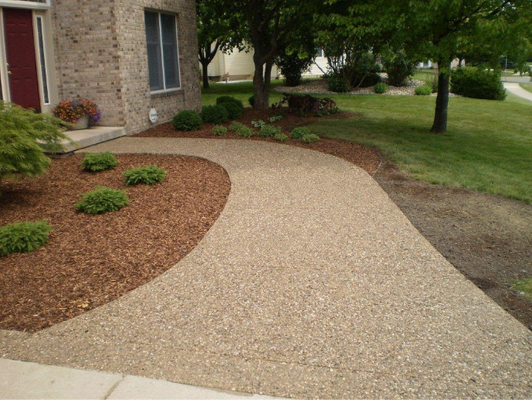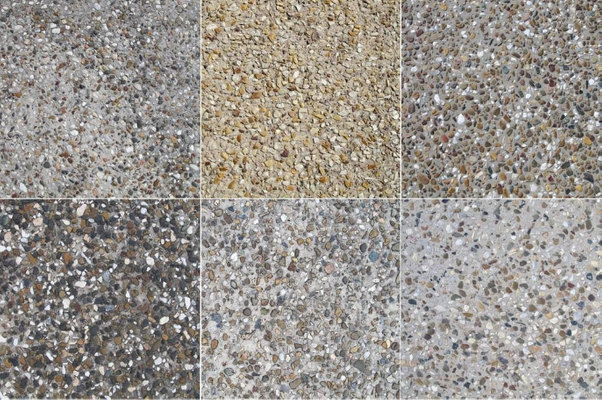Exposed Aggregate
Exposed Aggregate
What Is Concrete?
Concrete is a mixture of cement, air, water, sand, and gravel, with the standard concrete mix being made up of roughly 10% cement, 20% air and water, 30% sand, and 40% gravel.
Although the terms cement and concrete often are used interchangeably, cement is actually an ingredient of concrete. Concrete is a mixture of aggregates and paste. The aggregates are sand and gravel or crushed stone, and the paste is water and portland cement.
Not surprisingly, designers and artists have discovered that concrete is a living material that responds to their hands and then goes on from this responsive plastic state to become a hardened, permanent, complete expression of the artist's intent. These features and concrete's versatility of appearance as a building material, compatibility for use with diverse other structural materials, and the many techniques by which it can be used at the job site add up to an impressive array of assets. What other building material exists that we can pump, pour, cast, spray, trowel, mold, form, and carve? Our ability to adjust the physical characteristics of concrete to a host of application techniques is further reason why the material has found its way into such an assortment of uses.
Exposed Aggregate
Exposed aggregate concrete can almost be compared to a piece of granite or marble transformed by polishing: A plain, unremarkable surface has been stripped away to reveal the exceptional beauty lying beneath. In the case of concrete, that beauty is in the form of decorative aggregate, either natural or manufactured.
The decorative process of exposing aggregate has been around since the early 1900s, well before pattern stamping, stenciling, and decorative overlays became trendy. But this method is far from being ready for retirement. An exposed aggregate finish offers numerous advantages. And many of today's decorative concrete contractors are finding creative ways to take exposed aggregate to a new level. Contact us today to learn more!


